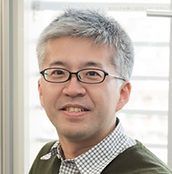
令和2年度
文部科学省科学研究費補助金
学術変革領域研究(B)

細胞運命操作による
植物生殖システムの
リモデリング
Title of Project
Remodeling Plant Reproduction System by Cell Fate Manipulations.
Research Project Number: 20B306, FY2020-2022, JSPS
The plant body contains haploid and diploid tissues in plants. Haploid tissues or gametophytes produce gametes after rounds of cell/nuclear proliferation and differentiation of gamete progenitor cells. In flowering plants, the embryo sac (female gametophyte) has two dimorphic gametes: the egg cell and central cell, while a pollen tube (male gametophyte) contains two sperm cells. Fertilization of these gametes facilitates seed development, which is necessary for our lives in terms of food production. Interestingly, several evidences have supported the plasticity or flexibility of cell fate in male and female gametophytic cells. Recent studies have begun to identify key factors regulating the identities of gametophytic cells.
In this research project, we examine the mechanisms of the determination or conversion of cell fates in reproductive cells, including gametes, via ectopic expression or mutations of the key regulatory factors. Through the generation of reproductive cells in somatic tissues, or conversely, through a conversion of reproductive cells to somatic cells, we study the principles of plant reproduction that will possibly improve plant breeding and reproductive systems.

Members
Daisuke Maruyama, PhD.
Kihara Institute for Biological Research, Yokohama City Univ.
Associate Professor

A Challenge for Arabidopsis Multiembryony Induction by a Cell Fate Change of the Synergid Cell
Synergid cells, two sister cells of the egg cell necessary for pollen tube attraction, are eliminated during or after double fertilization. One of the synergid cells termed as persistent synergid cells is absorbed by the early endosperm through cell-to-cell fusion. An Arabidopsis mutant, defective in cell fusion, displayed an enlargement of the persistent synergid cell adjacent to the embryo. In this project, we challenge the induction of multiembryony in Arabidopsis thaliana by altering the persistent synergid cell to the embryo.
Shohei Yamaoka, PhD.
Graduate School of Biostudies, Kyoto Univ.
Associate Professor

Remodeling Pollen Gametogenesis System based on the Study of the Bryophyte Model
Land plants form gametes in haploid gametophytes using evolutionarily conserved molecular mechanisms. Our group focuses on the early stage of male gametogenesis and investigates its core regulatory mechanisms through comparative analyses between bryophyte and flowering plant models. Our research provides insights into the development of new technologies that enable the artificial differentiation of germ cells from vegetative cells in plants.
Yoko Mizuta, PhD.
IAR, Institute of Transformative Bio-Molecules, Nagoya Univ.
Designated Assistant Professor

Mechanism of Cell Fate and Fertilization Ability Determination in the Sperm Cells by Single Cell Tracking
In flowering plants, the pollen is the male gametophyte, which develops during microsporogenesis. The haploid microspore develops mitotically to mature pollen composed of vegetative cells and two sperm cells. We focuses on the understanding and regulation of pollen and sperm cell development by our unique pollen genetic engineering and live imaging techniques. We aims to clarify the molecular mechanism of pollen fate determination and fertility acquisition by real-time monitoring and evaluation of pollen development at the single-cell level. Our research provides basic scientific evidence that will help plant breeding worldwide.
Research Area Advisors
Research collaborator
Shiori Nagahara, PhD.
Institute of Transformative Bio-Molecules, Nagoya Univ.
Postdoctoral Fellow
Single cell isolation and expression analysis of sperm cells
Publications
F-actin regulates the polarized secretion of pollen tube attractants in Arabidopsis synergid cells.
Daichi Susaki, Rie Izumi, Takao Oi, Hidenori Takeuchi, Ji Min Shin, Naoya Sugi, Tetsu Kinoshita, Tetsuya Higashiyama, Tomokazu Kawashima, Daisuke Maruyama
The Plant Cell (2022)
https://doi.org/10.1093/plcell/koac371
Target pollen isolation using automated infrared laser-mediated cell disruption.
Ikuma Kaneshiro, Masako Igarashi, Tetsuya Higashiyama, Yoko Mizuta
Quantitative Plant Biology (2022)
https://doi.org/10.1017/qpb.2022.24
Possible molecular mechanisms of persistent pollen tube growth without de novo transcription.
Kazuki Motomura, Naoya Sugi, Atsushi Takeda, Shohei Yamaoka, Daisuke Maruyama
Frontiers in Plant Science (2022)
https://www.frontiersin.org/articles/10.3389/fpls.2022.1020306/full
Deep Fluorescence Observation in Rice Shoots via Clearing Technology.
Yoko Niimi, Keisuke Nagai, Motoyuki Ashikari, Yoko Mizuta
Journal of Visualized Experiments (2022)
https://www.jove.com/t/64116/deep-fluorescence-observation-in-rice-shoots-via-clearing-technology
Detection of a biolistic delivery of fluorescent markers and CRISPR/Cas9 to the pollen tube.
Shiori Nagahara, Tetsuya Higashiyama, Yoko Mizuta
Plant Reproduction (2021)
http://link.springer.com/article/10.1007/s00497-021-00418-z
Regulation of gametangia and gametangiophore initiation in the liverwort Marchantia polymorpha.
Shohei Yamaoka, Keisuke Inoue, Takashi Araki
Plant Reproduction (2021)
https://link.springer.com/article/10.1007/s00497-021-00419-y
Advances in Two-Photon Imaging in Plants.
Yoko Mizuta
Plant Cell Physiology (2021)
https://doi.org/10.1093/pcp/pcab062
Development and Molecular Genetics of Marchantia polymorpha.
Takayuki Kohchi, Katsuyuki T Yamato, Kimitsune Ishizaki, Shohei Yamaoka, Ryuichi Nishihama
Annu. Rev. Plant Biol. (2021)
https://doi.org/10.1146/annurev-arplant-082520-094256
Persistent directional growth capability in Arabidopsis thaliana pollen tubes after nuclear elimination from the apex.
Kazuki Motomura, Hidenori Takeuchi, Michitaka Notaguchi, Haruna Tsuchi, Atsushi Takeda, Tetsu Kinoshita, Tetsuya Higashiyama, Daisuke Maruyama
Nature Communications (2020)
https://doi.org/10.1038/s41467-021-22661-8
ARP2/3-independent WAVE/SCAR pathway and class XI myosin control sperm nuclear migration in flowering plants.
Mohammad Foteh Ali, Umma Fatema, Xiongbo Peng, Samuel W. Hacker, Daisuke Maruyama, Meng-Xiang Sun, Tomokazu Kawashima
Proc. Natl. Acad. Sci. (2020)



